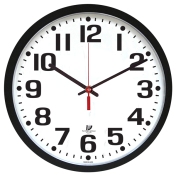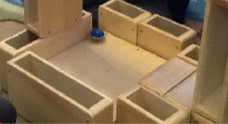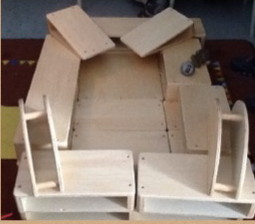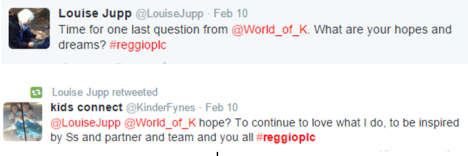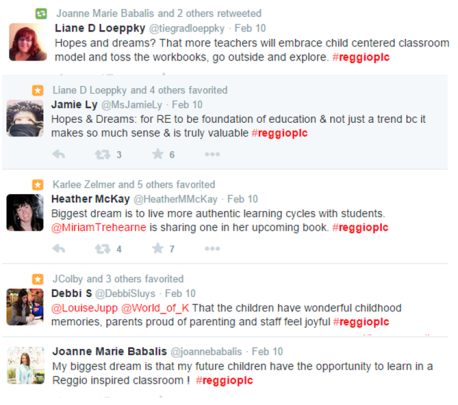By Nancy Niessen
The last #ReggioPLC chat was about Unveiling Learning, and Louise wrote a beautiful blog about this topic. Unveiling learning: when we have expectations our documentation is no longer pedagogical. When @LouiseJupp and I debriefed after the last chat, we talked about focussing on documentation choices for the next chat on May 5th at 7:00 p.m. EST. I had every intention of writing a blog devoted to that.
I’m not sure that I’m being entirely true to the topic of “documentation choices” as I had originally intended for this blog because there are many things about documentation that I’m currently reflecting upon. I’m relatively new on this Reggio journey and am still making sense of it and how it fits within the school system. How can it co-exist with the more traditional ways of being in the school system?
As I began writing, this article didn’t have a title. It was when I arrived at the end that the title emerged because learning about documenting and how to document effectively has indeed been an adventure for me, one that is ongoing. Wikipedia defines adventure as “an exciting or unusual experience. It may also be a bold, usually risky undertaking, with an uncertain outcome.” I don’t know about you, but that sure feels like a good fit for me in terms of my efforts to document and to learn more about documenting!
Documentation has been on my mind a fair bit lately for a variety of reasons: it has come up in #ReggioPLC chats, speakers at the #becs2015 conference were speaking about it, I’ve been reading about it, and I’ve been pondering it and discussing it with my partner in our classroom.
Questions, wonders and struggles abound when it comes to documentation. I remember hearing Marc Battle say, in paraphrasing Betty Jones, that it takes many years to get comfortable with documenting so we need to just jump in. I have jumped in, with the result being that sometimes I feel like I am swimming smoothly, other times like I’m flailing about in the deep end, and other times like I’m just standing still in the shallows not wading as deeply as I would like to.
When I struggle with something I tend to seek out others to talk to, and I read. Some of the resources that I read that have helped me with documenting are:
*Learning to Document in Reggio-inspired Education by Carol Anne Wien with Victoria Guyevskey & Noula Berdoussis
*The Power of Documentation in the Early Childhood Classroom by Hilary Seitz
*Pedagogical Documentation, Leading Learning in the Early Years and Beyond (MOE, Oct. 2012)
*Documentation in Full-Day Kindergarten, Principals Want to Know (Supporting the ON Leadership Strategy, Issue #15, February 2012)
*Curiosity, Curriculum and Collaboration Entwined: Reflections on Pedagogical Documentation by Pat Tarr (2010)
*Pedagogical Documentation Revisited, Looking at Learning and Assessment in New Ways
To be a researcher is to be curious.
When educators start with curiosity and a
Search for meaning as an entry into
Pedagogical documentation, they may find
Themselves in a new, and possibly
Uncomfortable position as teacher-researcher
~Pat Tarr
I have definitely felt uncomfortable as I delve ever more deeply into documenting. While I feel increasingly comfortable with the process of documenting, I have many questions still…
*How do I make decisions about what to document? Is it that what I am seeing and hearing is something new for a particular child? Perhaps the child is exploring materials he/she has never spent time with previously. Perhaps there is a clear problem that the child is working out that has engaged his/her attention. Perhaps I’m witnessing mastery of a new skill, be it social, academic, behavioural, etc.
*Who is this documentation for? Is it for my purposes as a record of learning? Perhaps it’s for the parents. Or maybe I have the child in mind and want to mirror to him/her what I am seeing and hearing. Perhaps what I am documenting could serve as a catalyst of some kind for other students.
*Why am I documenting? Why create annotated photos and learning stories?
*What do I do with all of the documentation that I gather and create? I certainly can’t put it all up, which takes me back to considering the “why” – why did I document what I did in the first place? Need I be gathering all the pieces of documentation that I do?
Some of my questions are echoed in the Pat Tarr article mentioned above. In relation to beginning to document she says:
“…’where do I begin?’ ‘what should I document?’ are questions that I often hear in my classes and workshops on pedagogical documentation. Documentation seems overwhelming to teachers that with so much happening in a classroom they honestly wonder where to start. Here I return to the notion of curiosity. What do you wonder about? What do children wonder about? How are they making sense of their world? These are different questions from those generated by the assessment lense that Asks questions about what does the child know, where is that child having difficulty?”
I’m also reminded of an article about learning to document, which outlines different “stages of documenter experience”, the first being “deciding to document” and the last being “documenting decision making”. I think that the article this comes from, The Power of Documentation in the Early Childhood Classroom by Hilary Seitz, is worth reading and is helpful in terms of understanding that learning to document truly is a journey, consciously undertaken. Carol Anne Wien’s article, referenced above, also suggests there is a progression towards Pedagogical Documentation from “developing habits of documenting” to “sharing visible theories with others for interpretation and further design of curriculum”.
Considering what these authors have to say has helped me over the years to navigate my way on this documenting adventure, and to understand where I am at, what the next step might be for me to consider.

(photo credit)
During the April 21, 2015 ReggioPLC chat, an interesting conversation about documentation unfolded and the concern about not being able to capture everything that goes on in the classroom arose.
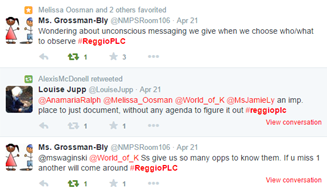

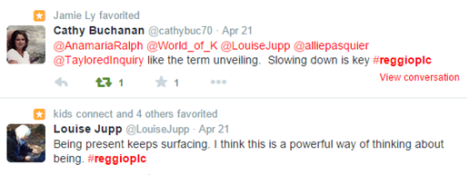
I was reminded immediately of something Jamie Ly said in the previous #ReggioPLC chat:

And what others said related to Jamie’s comment:

These thoughts served to make me check my ego and reflect on the fact that learning can happen, and in fact does happen all the time, whether or not I am present with the children, documenting what they are doing. This still didn’t entirely settle the issue of wanting to capture all that is going on in our classrooms, though it did take me full circle to consider the “why” of my documentation. Is it so that I can reflect the learning back to the child, or perhaps share it with others? Is it so that I can report? Rachel’s comment is one I find myself thinking about because it captures very much how I feel and why I want to document…

Those attending the BECS 2015 conference in March, were honoured by the sharing of Carol Anne Wien, Ellen Brown and Brenda Jacobs. Their thinking about relationality and assessment was so new and fragile that we were asked not to speak publicly about it, but rather to hold their generous sharing in a place of security. Many of us went away head-full, contemplating whether or not Pedagogical Documentation could be used for assessment. Perhaps this was one of the dichotomies to which Will Letts referred to at the end of the afternoon, and we needed to think beyond black and white possibilities.
On April 30th, at a day-long event called How Does Learning Happen, Foregrounding Relationships, Carol Anne Wien spoke about relationality and connections. I apologize up front if I misrepresent her thinking, or anyone else’s for that matter that I reference in this blog. I do thank them for sharing their thinking and for the impact it has had on my own thinking.
It was suggested that “assessment is about mastery of the known” whereas relationships/connections is about the unknown. Is this not what our Pedagogical Documentation is about, capturing the unknown, what children are thinking, their theories? Carol Anne suggested that relationality and assessment are different, or are at least “stretched apart” and are “different processes”.
Let’s consider for a moment what Pedagogical Documentation is, for it’s very different than the act of documenting and the documentation we produce.
“… pedagogical documentation is a process for making pedagogical (or other) work visible and subject to dialogue, interpretation, contestation and transformation.” (Dahlberg, 2007, p. 225)
Karyn Callaghan spoke about the importance of meaning-making in Pedagogical Documentation. Is this not in fact what turns our documentation into Pedagogical Documentation? It was as though a lightening bolt hit me right there while she was speaking. I wondered are the Pic Collages that I develop, something with the children, and then tweet for parents actually Pedagogical Documentation? Do I fully understand what Pedagogical Documentation is? Am I making meaning or just capturing moments? I’ve been trying to add more of my theories and wonders to the shorter pieces of documentation I create, but I don’t always. I might reflect on them afterwards – does that make them Pedagogical Documentation? These certainly aren’t all that I do in terms of documentation, but I started really wondering about whether or not I was in fact, engaged in creating Pedagogical Documentation.
What if what I am creating is not, in fact, Pedagogical Documentation? What was it then? Annotated photos? If I am not reflecting and offering my thinking, it’s “just” documentation, not Pedagogical Documentation. Is that okay? Is there a place for “just documenting”? Need everything we produce be Pedagogical Documentation? Is that possible?
This reminded me of Ellen Brown asking the following, and my confident response…

I offered a confident response, but now I wonder, what if that response was based on that which wasn’t in fact Pedagogical Documentation? Would that change my answer? Is Pedagogical Documentation feasible to do in a system where I am required to look for the mastery of skills, where we do have to have the “known” as our lens. Or is considering expectations as our lens a “myth of practice”, a “script for action” – things we’ve always done, but that aren’t necessarily required or expected?
I’m shifted back to the idea of dichotomies. Perhaps there is a time and place for both Pedagogical Documentation that includes my reflections and theories about the children’s learning, and the assessment of discreet skills. Carol Anne spoke about this at the Foregrounding Relationships event, that there are times when we need to look at specific skills, and she gave the example of a student who seems to be struggling with something. Paying attention to that might help us to determine if there is an area that needs to be further investigated or assessed.
Throughout this documentation journey I have struggled, at times, with more traditional assessment, with having to assess curriculum expectations in terms of academics. I would far rather engage in documenting inquiries, wonders, etc. I would far rather reflect on the children’s thinking and consider issues like “where to now”? I have pushed back against documentation programs that ask us to put the curriculum expectations on our documentation. I think I can finally articulate the “why” more clearly.
I wonder if many of us who “feel at home” with Reggio thinking struggle in the school system and in particular with documentation, because of the difference between assessment of skills and what we are asked to do with Pedagogical Documentation. Is looking at what children are doing through the curriculum lens allowing us to engage in Pedagogical Documentation, to approach our work to look for the “unknown” as Wien suggested. Looking only for the “known”, the curriculum expectations, limits what we will see.
Pat Tarr says, “…the assessment lens (that) asks questions about what does the child know, where is that child having difficulty? How does s/he measure up in relation to a standard or learning outcome that most educators, in my experience, use to view the children in their class? By assessment lens, I include curriculum expectations and what must be documented for reporting to parents. That is not to say that these are unimportant, but they limit what is possible.”
“I wouldn’t have seen it if I didn’t believe it.”
~Fox Mulder on X-Files
(the quote is also attributed to Marshall McLuhan)
If we only consider the known, the curriculum expectations, I wonder if we are unlikely to engage in documentation that captures ALL that a child is, beyond the expectations. The quote reminds me of our view of the child. Our students regularly surpass the expectations laid out in our curriculum. Pedagogical Documentation allows us to capture that and reflect it back to the students and the world. I believe that our students are more, far more, than the expectations. I’m reminded of Karyn Callaghan saying that expectations ask us to consider how alike children are. What I enjoy most about my work is getting to know how my students are different, how unique each one is. Our documentation allows us to show that to others, as a way of honouring the children with whom we work. It is because I believe in our children’s uniqueness, that I see it and choose to document that.
In chatting about this blog someone suggested to me that there is more potential to see the greatness of our students if we believe in it. Our view of the child will be reflected in what we choose to document. Will we focus only on the expectations, or will we set out to capture the unknown and perhaps see beyond the expectations set out in the curriculum? Doing so is a more exciting journey, an adventure if you will, that allows us to spend time getting to know a child’s unique qualities, vs how he/she is like others. I can always return to my documentation and see the curriculum in it. I think this was captured well during one of our #ReggioPLC chats:

As I said at the beginning of this blog, documentation has been on my mind lately. I don’t have clarity on all of my thoughts and questions yet, and must accept and honour that learning to document is a journey, an adventure full of excitement, frustrations, new learning and challenges. I may look back on this blog down the line and say “I can’t believe that’s what I thought”, but for now, I offer my thinking out for your feedback, comments, reflections, connections, etc., and I thank you for taking the time to read this.
How do you make your documenting decisions? What guides them?
Is there something you are wrestling with in terms of documenting?
How does Pedagogical Documentation allow you to be a co-learner, vs someone who has to have all of the answers?
How does documenting allow you to explore the unknown?
FURTHER READING:
Lively Minds: Distinctions between academic versus intellectual goals for young children by Lilian Katz
Using document panels to record, reflect, and relate learning experiences by Yomi Ogunnaike-Lafe and Joan Krohn
The Contribution of Documentation to the Quality of Early Childhood Education by Lilian G. Katz and Sylvia C. Chard (1996)
Documentation: Ideas and Applications from the Reggio Emilia Approach by Gigi Schroeder Yu









